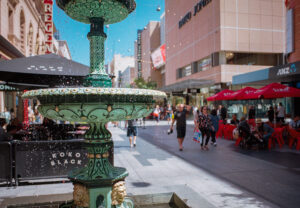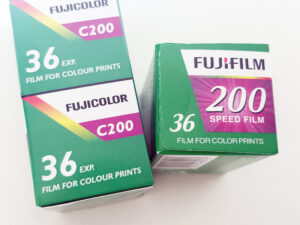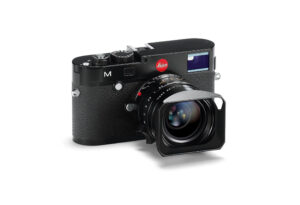What is Camera Lens Fungus and How Does It Form? Camera lens fungus is a common but dreaded issue for photographers. It appears as spiderweb-like threads, cloudy patches, or small specks inside a lens. But what exactly is it? Lens fungus is caused by fungal spores that find their way into the lens and begin to grow under specific conditions. The fungus itself doesn’t eat the glass; instead, it feeds on organic materials such as dust, grease, adhesive, or textile lint trapped inside the lens elements. The metabolic byproducts of the fungus—such as acids—can etch into the glass surface, causing irreversible damage and degrading image quality.
Where Does Lens Fungus Come From?
Fungal spores are everywhere—in the air, on surfaces, and even inside your camera bag. However, these spores require specific conditions to germinate and spread. Lens fungus thrives in:
- High Humidity: Relative humidity above 70% for prolonged periods (more than three days).
- Lack of Airflow: Stagnant air encourages fungal growth.
- Darkness: Stored lenses in dark places (e.g., a closed camera bag or drawer) create the perfect breeding ground.
- Food Sources: Dust, grease, adhesives, and even microscopic debris from lens coatings can nourish fungus.
- Temperatures Between 10°C and 35°C: Fungus thrives in moderate temperatures, making tropical and humid climates particularly risky for camera gear.
Vintage lenses tend to get fungus more than modern lenses, but it can still happen. Generally, prevention is better than the cure, and the best way to prevent lens fungus is to simply use it and expose it to UV light which is deadly to lens fungus. Also, keep it dry, keep it clean, and never breath on a lens to clean it. Ever. That is helping to introduce fungus spores to your lens.
How to Prevent Lens Fungus
Preventing lens fungus is much easier than trying to remove it. Here are some key methods:
1. Store Your Lenses Properly
- Use a Dry Cabinet: Climate-controlled cabinets with built-in hygrometers keep relative humidity between 30% and 50%—the ideal range for lens storage.
- Silica Gel Packets: These moisture-absorbing packs help reduce humidity in storage cases and camera bags. Replace them periodically.
- Dehumidifiers: If you live in a humid climate, using a dehumidifier in your storage room can help maintain dry conditions.
- Keep Lenses in Well-Lit Areas: Fungus thrives in darkness, so occasionally exposing your lenses to light can help prevent growth.
2. Control Temperature and Humidity
- Ideal Humidity Levels: Keep relative humidity below 60% but not below 30% to avoid damage to lubricants inside the lens.
- Use Heated Storage: Storing lenses in a cabinet warmed to 40°C (but no higher than 50°C) can help keep moisture levels down.
3. Maintain Good Airflow
- Avoid Sealed Containers in Humid Conditions: A completely sealed container in a humid environment can trap moisture, creating a fungal breeding ground.
- Use Ventilated Storage: Keeping lenses in a space with some airflow helps prevent condensation.
4. Clean Your Lenses Regularly
- Keep the Front and Rear Elements Dust-Free: Use a blower, microfiber cloth, or lens cleaning solution to remove dust and grease.
- Handle Lenses with Clean Hands: Fingerprints contain oils that can serve as a food source for fungus.
- Check Lenses for Fungus Periodically: Holding a lens up to a bright light can help you spot early fungal growth.
How to Identify and Check for Lens Fungus
- Remove the lens from your camera.
- Shine a bright light through the lens. A flashlight or LED light will help reveal tiny fungal threads or cloudy patches.
- Look through both ends of the lens. Check for any white or black specks, web-like growths, or hazy spots.
- Test Image Quality. If images appear hazy, lack contrast, or show unusual flare, fungus may be affecting the optics.
Does Lens Fungus Affect Image Quality?
The impact of lens fungus depends on the severity of the infection:
- Mild Fungus: Small patches of fungus may have little or no impact on image quality.
- Moderate Fungus: A visible web-like structure may reduce contrast and introduce flare.
- Severe Fungus: If the fungus has etched into the lens coatings or glass, it can permanently degrade image sharpness and make the lens unusable.
How to Clean Lens Fungus
1. Sunlight Exposure (Non-Invasive Method)
Sunlight contains UV rays that can kill fungal spores.
- Place the lens near a bright window or outdoors in direct sunlight for a few hours.
- Remove the front lens cap but keep the rear cap on to avoid focusing sunlight through the lens (which can cause burns or fire hazards).
2. Using UV Light
- A UV sterilization lamp can be used to kill fungus in a controlled environment.
3. Chemical Cleaning (For Accessible Surfaces)
If the fungus is on an external lens element:
- Use isopropyl alcohol (99%) or a hydrogen peroxide and ammonia mixture (3:1 ratio).
- Gently apply with a microfiber cloth or cotton swab.
- Avoid excessive scrubbing, as this can damage lens coatings.
4. Professional Lens Cleaning (For Internal Fungus)
- If the fungus is inside the lens, disassembling the lens may be necessary.
- Professional camera technicians have the right tools to clean fungus and restore lenses safely.
- Some severe cases may require replacing damaged lens elements.
Should You Buy a Lens with Fungus?
Buying a used lens with fungus can be risky. Consider:
- Can it be cleaned? If the fungus is in the early stages and external, cleaning may be possible.
- Is the price worth the risk? A severely infected lens may not be worth repairing.
- Will it spread to other gear? Storing a fungus-infected lens with clean lenses can lead to cross-contamination.
Camera lens fungus is a serious issue that can lead to irreversible damage if left unchecked. However, by understanding what causes it, taking preventive measures, and knowing how to clean it, you can keep your lenses in top condition for years to come.
Key Takeaways:
- Store lenses in a dry, well-ventilated space.
- Keep relative humidity below 60%.
- Use silica gel packs or dry cabinets.
- Regularly inspect and clean your lenses.
- If fungus appears, act quickly to prevent permanent damage.
If you’ve encountered lens fungus, share your experiences in the comments below! Have you successfully cleaned a lens, or did you need to replace it? Let us know!







































































